This was the first time the award was given to an African American and the first time it was given to a jazz musician. This gesture, at a time when jazz was not yet fully recognized as an art form, set the jazz arts community abuzz like never before. Not only did the medal go to the most respected, honored, and accomplished jazz musician in over four decades, but it was as if the award had gone to jazz itself, bestowed at the highest level of government. Greater recognition was bound to follow, and it did.
Jazz received its first federal grant in 1969, which grew tenfold over the next five years and also set the stage for jazz to receive significant grant money from reluctant foundations for the next ten years. Shortly thereafter, jazz was accepted as a fully recognized American art form.
And it all began at the Ellington tribute in the spring of 1969, well described by jazz critic Dan Morgenstern: “Though there were moments of appropriate solemnity, the tenor of the evening was one of cheerful warmth and friendly informality, set by the president himself.”
More in-depth information can be found in my book Ellington at the White House, 1969, and the recorded concert can be heard on All-Star White House Tribute to Duke Ellington, Blue Note (2002).
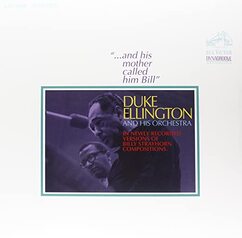
Mother Called Him Bill is the maestro’s homage to his long-term composer-companion, Billy Strayhorn, who passed in 1967. The record is notable for its celestial tracks by altoist Johnny Hodges, particularly in “Blood Count,” “After All,” and “Day Dream,” the latter a late-at-night, sob-in-year-beer favorite. Stray’s compositions brought out that special, sensuous Hodges sound. As singer Lillian Terry recently put it, “Heavens, when he blows those long, languid notes . . . it’s an actual caress.”
The flip side of the Hodges coin—the bluesy side—Billy also knew well, as illustrated by “Snibor,” “The Intimacy of the Blues,” and “Acht O’Clock Rock.”[2]
In the year 1969, DownBeat fairly embraced the avant-garde movement while also fully embracing rock. Regarding the former, reviews of new thing musician albums were well represented and, generally speaking, highly rated (there were exceptions, like altoist Lou Donaldson’s scorching article declaring it was a bunch of noise made by amateurs[3]).
For example, albums by Gunter Hamphill, John Carter and Bobby Bradford, Don Cherry, Archie Shepp, Pharoah Sanders, Ornette Coleman, Sonny Simmons and Prince Lasha, Albert Ayler, Roscoe Mitchell, and Joseph Jarman were all received. And, oh, the movement’s founding father, Ornette Coleman, was entered into the DownBeat Hall of Fame in 1969.
DownBeat had tippy-toed around rock in years past but dove deep into the music in 1969. Besides establishing a regular column for the first time (by Alan Heilnman), the magazine featured articles about the following rock musicians and groups, as well as reviews of their albums: Tim Hardin, Steve Miller Band, George Benson, Mike Bloomfield, Bob Dylan, Mothers of Invention, Blood, Sweat and Tears (BST), Ten Years After, and Chicago.[4]
The Newport Jazz Festival followed suit, inviting a slew of rockers to perform, including BST, Lighthouse (a BST clone), Ten Years After, Jethro Tull, Jeff Beck, Mothers of Invention, Sly and the Family Stone, and James Brown. In one respect it worked—the festival drew a larger crowd. But it wasn’t a jazz crowd; it included a sizable number of youthful, rowdier fans (think Woodstock), resulting in a host of security problems. Impresario George Wein concluded, “The kids destroyed the event and the experiment was a failure.” The Newport town council concluded, “No rock next year.”[5]
It was also the year of Miles Davis. DownBeat readers voted him jazzman of the year and best trumpeter and combo leader. They also voted his albums Filles de Killimanjaro (FDK) and In a Silent Way the year’s best and third best, respectively.[6]
Interestingly, neither FDK nor In a Silent Way stirred much controversy at the time of their release—that would come later.
Paul Tingen notes the following regarding the FDK tracks:
“Petits Machins” has its roots in the second great quintet’s hard bop origins, even as it features a lyrical folk melody. “Toot de Suite” also has a graceful, folk-like melody but is underpinned with a straight rock rhythm. The “Filles de Killimanjaro” track has an almost pastoral feel and a strong African influence on the rhythms and a gorgeous theme. The solos and the simple chord changes are to some degree idiomatic to rock music. On “Stuff,” the quintet sounds as if it’s having fun experimenting with funk and soul influences without adding anything new.[7]
The quintet that recorded FDK consisted of Miles on trumpet, Wayne Shorter on sax, Chick Corea on piano, Dave Holland on bass, and Tony Williams on drums. (Replace Tony Williams with drummer Jack DeJohnette, and this group would have been called Miles’s “Lost Quintet,” a quintet that never made a studio recording).
Cook and Morton describe In a Silent Way, the second stepping-stone album, as a collage using “found objects” put together with a view to the minimum details and coloration required to make an impact—the “found objects” being British guitarist John McLaughlin, Austrian pianist Joe Zawinul, whose “In a Silent Way” became a centerpiece of the album, and Columbia producer Teo Macero, who stitched repeats of certain recorded live studio passages back into the fabric of the music, giving it continuity and a certain hypnotic circularity.
In effect, three new players of electric instruments (Chick Corea on piano, Joe Zawinul on piano and organ, and John McLaughlin on guitar) joined four members of the second classic quintet (Miles Davis on trumpet, Wayne Shorter on soprano sax, Herbie Hancock on electric piano, and Tony Williams on drums) to give the band a sound completely unlike any previous incarnation.[8]
Producer Teo Macero’s post-production role was crucial to the outcome (quite unusual for jazz at the time). Teo edited two hours of recorded music and trimmed it with Miles to 27 minutes of original music. He then expanded it to 38 minutes (to fit two sides of a 12” LP) by repeating certain sections.[9]
Cook and Morton praise In a Silent Way as a beautiful album, touching and centered. The title piece and “Shhh/Peaceful” are among the most atmospheric recordings in modern jazz.[10]
In a Silent Way became an important forerunner of ambient music. Not certain what to make of the album, the DownBeat reviewer awarded it three and a half stars.[11]
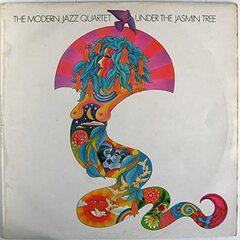
Another 1969 album of note featured the venerated Modern Jazz Quartet. Released on Beatles label Apple Records in 1968, Under the Jasmin Tree featured the lengthy three-part suite “Three Little Feelings” and “Exposure,” both poised structured fare with swinging elements, as well as two surprises: “The Blue Necklace” and “The Jasmin Tree,” both based on the Afro-Moorish rhythms of Morocco, with drummer Connie Kay and bassist Percy Heath front and center.
On “The Blue Necklace,” a very active Kay rang his triangle, shook his jingle bells, and tappety-tapped his snare’s skin and rim alternately, and at times simultaneously, while Heath plucked a high-note, clave-like rhythm on his bass.
On “The Jasmin Tree,” Heath held the bottom with a steady boom-boom-boom as Kay maintained a clack-clack-clack, sock cymbal clucking away underneath, a triangle keeping the pulse on top (instead of a ride cymbal), and—the coup de grâce—a tambourine gospel shaking that sounded like the quick one-two hand claps of a church choir.
In the middle of this throbbing stew, John Lewis on piano and Milt Jackson on vibes twined their way through a folk-like ditty, stating the melody, comping, and soloing, first one then the other, back and forth.
About three-quarters of the way through, the gospel-ish rhythm came to a halt, and a new but related melody (Moroccan folk song) was introduced, played in unison by piano, vibes, and bass. Following this interlude, it was back to the Moorish church, and the tune concluded as it began.
DownBeat magazine awarded five stars to this welcome departure from a much-revered group, which, by the way, also played the White House in 1969.[12]
- Critics Poll, DownBeat magazine, August 21, 1969; Readers Poll, DownBeat magazine, December 25, 1969.
- Edward Allan Faine, “Faine Favorites: Top 10 Alto Sax Albums,” Jazz Blog, August 31, 2018.
- Lou Donaldson, scorching review of new thing music, DownBeat magazine, February 1969.
- All issue review of both avante-garde and rock music coverage, DownBeat magazine, January 9–December 25, 1969.
- Coverage of Newport Jazz Festival, DownBeat magazine, August 21, 1969.
- Readers Poll coverage of Miles Davis, DownBeat magazine, December 25, 1969.
- Paul Tingen, Miles Beyond: The Electric Explorations of Miles Davis, 1967–1991 (New York: Billboard Books, 2001), 46.
- Richard Cook and Brian Morton, The Penguin Guide to Jazz on CD, 7th ed. (NewYork: Penguin Books, 2004), 408–409.
- Tingen, Miles Beyond, 60.
- Cook and Morton, Penguin Guide, 66.
- DownBeat magazine, October 1969.
- Edward Allan Faine, The Best Gig In Town: Jazz Artists at the White House, 1969–1974 (Takoma Park, MD: IM Press, 2015), 27–32.

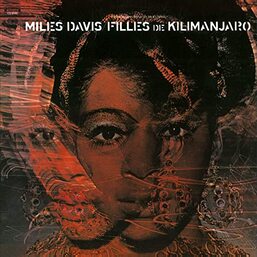
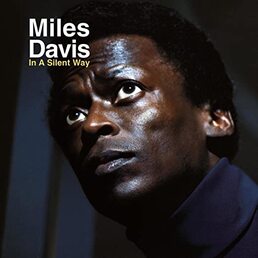

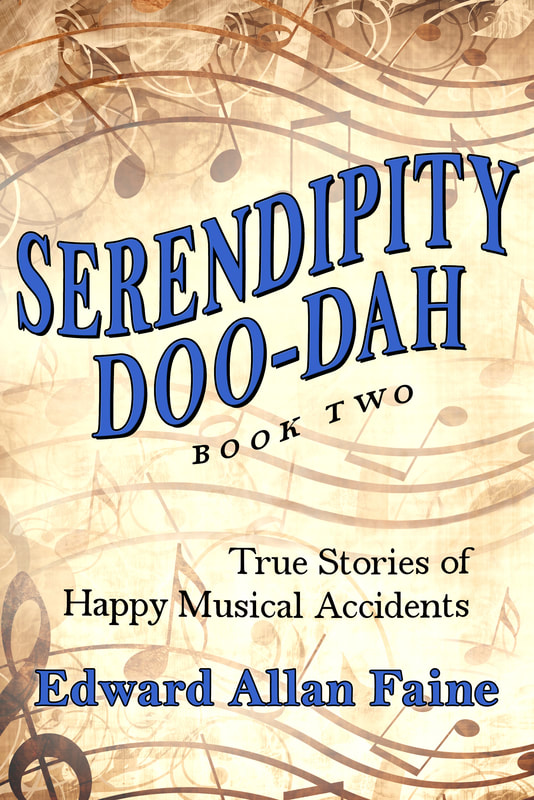
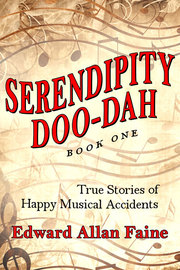
 RSS Feed
RSS Feed